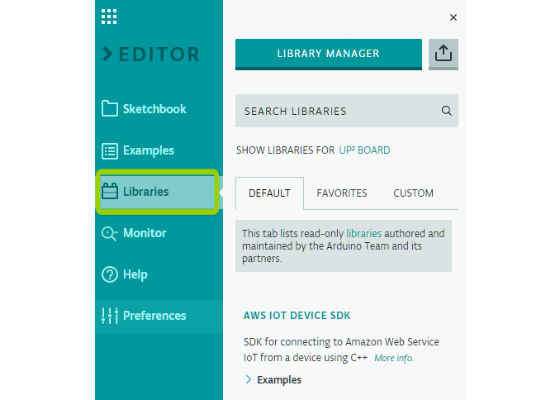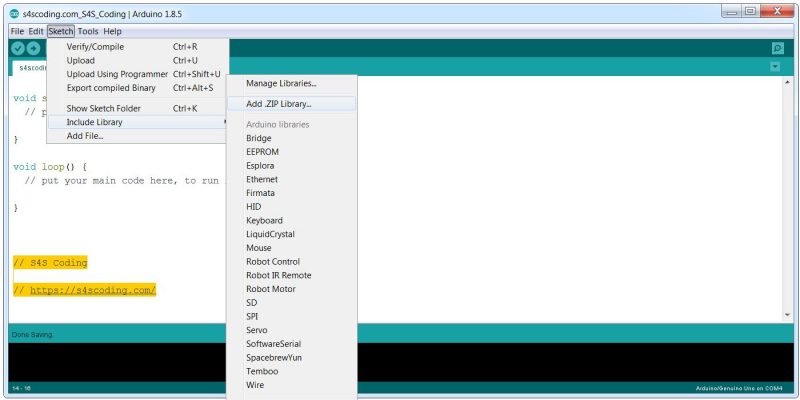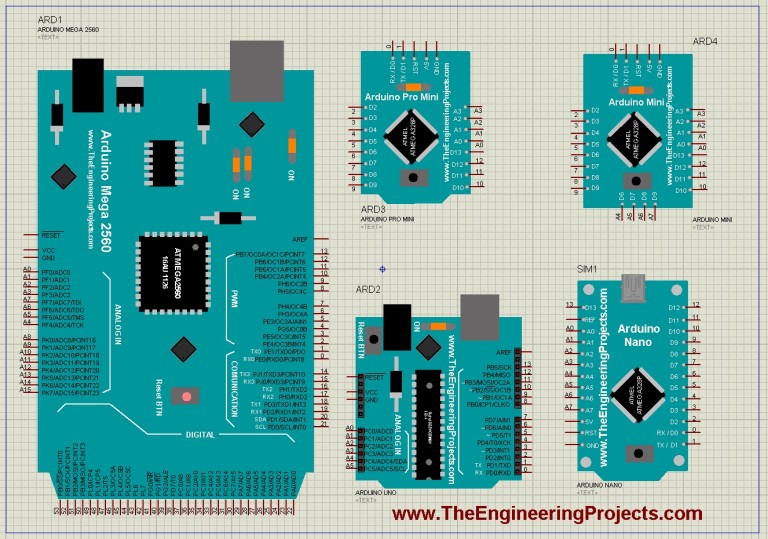

- #Arduino libraries directory install#
- #Arduino libraries directory zip file#
- #Arduino libraries directory software#
- #Arduino libraries directory code#
- #Arduino libraries directory zip#
#Arduino libraries directory zip#
If you're not familiar with Git, don't worry: you can download libraries directly as ZIP files from GitHub, too.
#Arduino libraries directory code#
It's becoming increasingly common for library authors to manage and publish them using a source code management site called GitHub, so if you're already familiar with the "Git" source code management tool you can use that to clone the latest version of the library to your computer.
#Arduino libraries directory zip file#
Libraries are usually published as a ZIP file that you can download and extract.
#Arduino libraries directory install#
This is the directory we'll use to install new libraries. The folder must have that name so that the Arduino IDE can find it. If the "libraries" directory doesn't exist yet, create it. Inside that directory you'll see one subdirectory for each of the sketches you've saved, and also a single subdirectory called "libraries". Open the sketchbook location (as shown in the Preferences dialog) from inside your file browser, ie Windows Explorer or MacOS Finder. On Windows it is usually named "Arduino" inside the My Documents directory. On OS X and Linux the sketchbook directory is usually named "sketchbook" inside your home directory. You'll see a dialog showing various options including the path to your sketchbook: If you don't know where your sketchbook directory is located, open the Arduino IDE and select the "Preferences" menu. That's handy because it keeps everything in one place. Recent versions of the Arduino IDE allow you to install libraries inside a special folder in the sketchbook directory, which is where your sketches are stored. Your Arduino Libraries DirectoryĪll of your Arduino libraries go into a special "libraries" directory so the Arduino IDE can find them. You can also try the Arduino website, which lists many common libraries at Failing that, try a Google search for "Arduino library" and the name of your hardware, and see what you find. If you need Arduino support for a specific piece of hardware, try checking the vendor's website for an Arduino library.

For example, our Infrared Temperature Sensor Module has a matching library available called "IRTemp" that you can install in the IDE to make it easy to use the module in your projects. Libraries can come from many places, often from hardware manufacturers who supply libraries to allow the Arduino IDE to support their specific hardware.
#Arduino libraries directory software#
Instead, it supports "libraries", which are self-contained modules that can be used to extend the software environment to add specific features or hardware support. I've not tested it but think the latest IDE (1.8.0) is now working the way it used to work and sub directories for header files works again, so depending on which version of the IDE it may or may not work.The Arduino software environment includes many helpful features to make it easier to write programs for your projects, but it can't include built-in support for every single possible piece of hardware or all software features. However after much discussion the Arduino team decided to change their mind and fixed it so that other sub directories would work again for include files which is the way it used to work. The IDE copies the user sketch directory and files over to a working directory where it does the build and recently the IDE was modified to not copy any subdirectories except src so any headers in directories other than under src would not work. See this github issue for the gory details: Subfolders can no longer be included There was lots of discussion about this in a github issue related to this. |_BlinkLib.h #include "src/BlinkLib/BlinkLib.h" In recent versions of the Arduino IDE(including 1.6.10) if you want to include libraries from the sketch folder you need to put them in a src subfolder. Use hardware SPI (on Uno, #13, #12, #11) and the above for CS/DCĪdafruit_GTFT_ILI9341 tft(TFT_CS, TFT_DC, -1, >FT_IO)

For the Adafruit shield, these are the default. #include "Adafruit_GTFT_ILI9341\Adafruit_GTFT_ILI9341.h" this does also not compile with my Arduino 1.6.10 this does not compile with my Arduino 1.6.10

MIT license, all text above must be included in any redistribution Written by Limor Fried/Ladyada for Adafruit Industries. Please support Adafruit and open-source hardware by purchasing These displays use SPI to communicate, 4 or 5 pins are required toĪdafruit invests time and resources providing this open source code, This is our GFX example for the Adafruit ILI9341 Breakout and ShieldĬheck out the links above for our tutorials and wiring diagrams


 0 kommentar(er)
0 kommentar(er)
